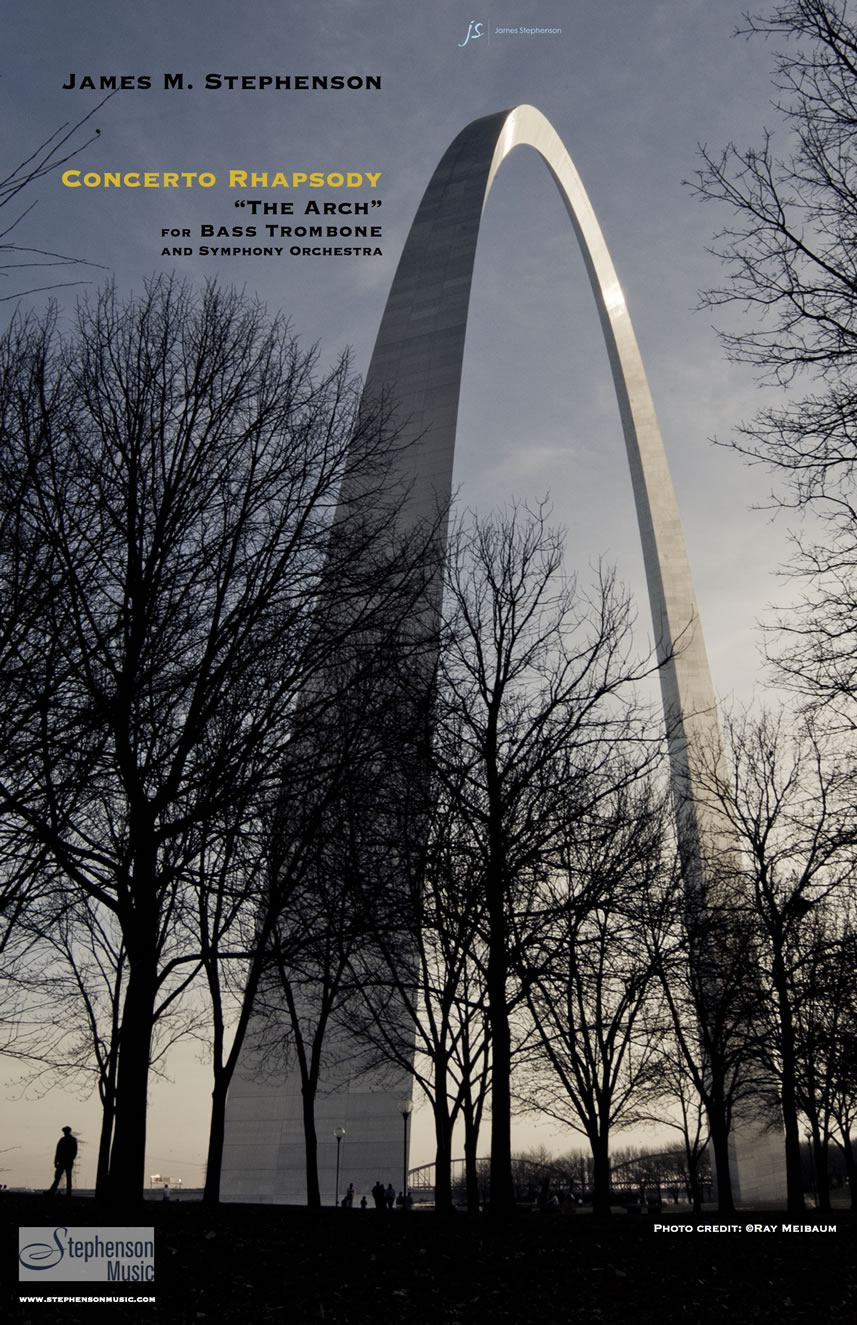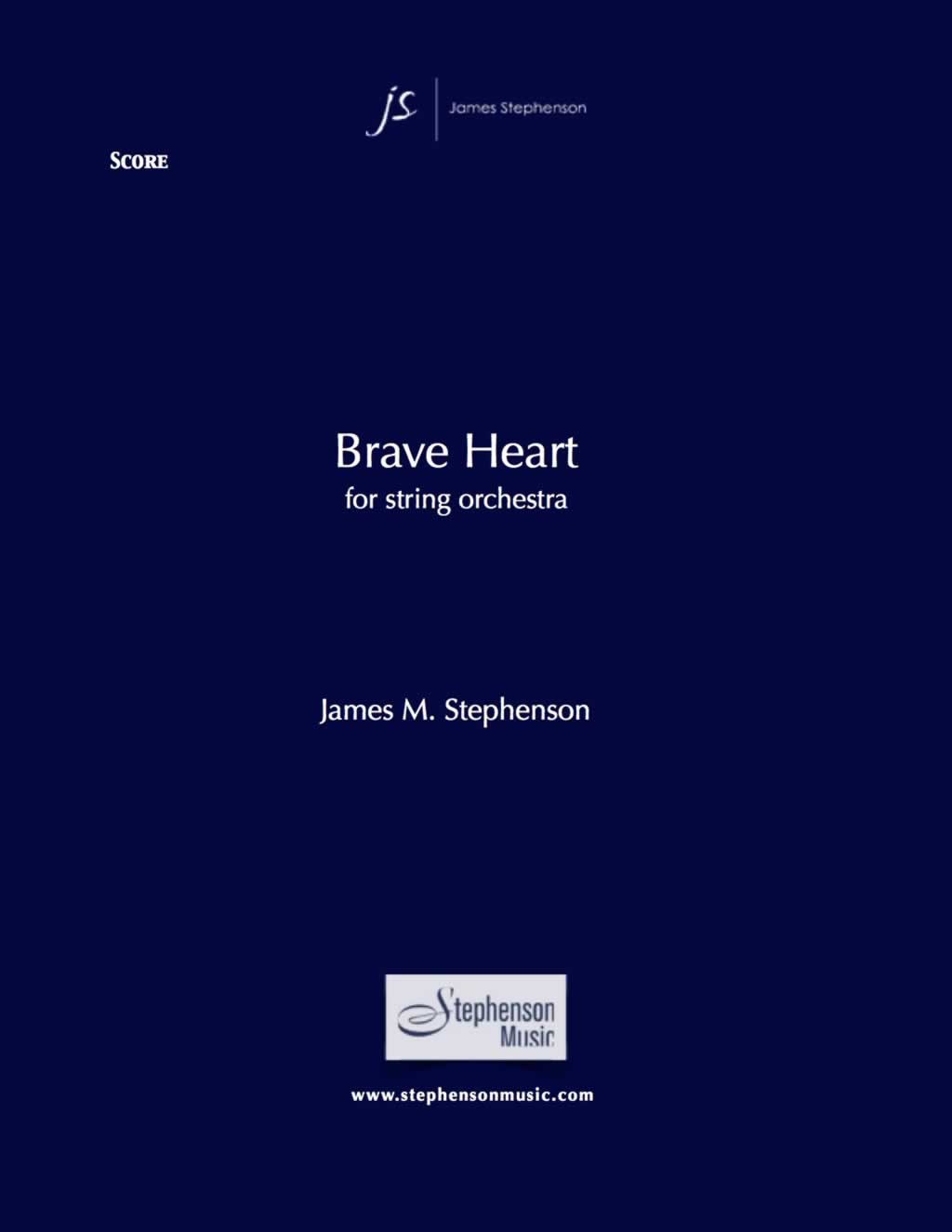Concerto Rhapsody “The Arch”
$150.00 – $300.00
16’30
For solo bass trombone and orchestra.
Solo Bass Trombone *32*32 – 4221 – hp – t+3 – str
Description
For Bass Trombone and Orchestra
Duration: 16’30
Commissioned and premiered on April 28, 2017, by the St. Louis Symphony, with their bass trombonist Jerry Pagano as soloist, and Music Director David Robertson conducting.
(Program Notes for original version written in 2010, edited in 2016)
In the fall of 2009, after having heard some of my music at Interlochen, St. Louis Symphony’s bass trombonist, Gerry Pagano, contacted me with the idea of writing a new sonata for him. It wasn’t until several months had passed that the piece got written (Gerry is a patient man!), but a phone conversation with him in early June, 2010, sparked an immediate inspiration for the piece. Gerry had mentioned offhandedly that it would be nice to have a piece that would somehow represent where he lived and worked, so therefore…
The entire piece is one big Arch. (Wonder where I got that idea!!). I am big on symbolism in my music, and this seemed the perfect opportunity. Almost every phrase is a miniature arch. They start low, rise up, and return almost to where they started. This happens in both the solo part and the accompanying parts. Even just the opening 6 notes, the way the slur is written over it: it visually looks like an arch.
And there’s more.
Here are some facts about the St. Louis Arch, and how they inspired me musically:
It was designed by Eero Saarinen. If you take the ‘E’s and ‘A’s in his name, they inspired the very first phrase in the solo part.
The piece does begin in A, though I kept it ambiguous on purpose – an effort to capture how anyone must feel when first designing and building a structure that large and permanent. Will this work? Will people ‘get it’? etc…
The outer width of the arch is 630 feet. The (original) version with piano is 630 measures. (*see note of explanation below)
The width of each base is 54 feet. You’ll notice that the *opening section is 54 measures, and so is the last section.
The first and last measures are also 5/4 bars, so as to further the symbolism.
The dimension at the top of the Arch is 17 feet. So, the climactic section of this piece is 17 measures. I had to add one measure, however, and here’s why:
The piece is very symmetric, so as to recognize the sections of the arch that were constructed. After the first 54 bar section, each successive section “on the way up” is 64, 64, 64 and 60 measures before finally arriving at the climactic 17 measure (+1) top. I had to add that one extra measure so that the *total count of 630 could be divided evenly in two.
That middle 17 measures throws that off unless I add one more. The optional high Bb for the soloist at the end of that section is the highest note in the piece.
It’s not the EXACT middle of the piece – I had to take a little liberty there. After that climax, the sections repeat themselves, but in reverse: *60, 64, 64, 64 and the final 54. I found that this symmetry provided sonata-like options for repeating previously heard material.
Lastly, I read one small mention of the worries of the builders during the construction process. If even the smallest of errors occurred (even miscalculating by 1/128th of an inch on either side’s base), then the entire structure would fail to connect perfectly at the top. I symbolized this by adding a 1/128th rest near the end. Granted, the work’s existence won’t depend on this small rest, but it was fun to further the connection musically.
Also worth mentioning is that each successive section rises in both key-domain and in tempo on the way up (and the reverse on the way down, of course.)
We start ambiguously in A, and very slowly. We then go (in both major and minor keys) to *Bb, B, C and D until we very definitively arrive in Eb at the climax,
which is about as far away from the opening key of A as possible – like the Arch. While climbing through the keys, we also increase the tempo (and meter) gradually, until arriving at the very fast 1/2 section. Generally speaking, the range of the music moves higher as we go up, and lower as we come down. It is important to note that all of the little games or tricks in the world won’t matter unless the musical creation is genuine and honest (and good!). I didn’t want it to be trite or kitsch, but a full musical statement that just happened to be supported by little mathematical facts created by the architect. I hope that the listener finds that my goals were successfully realized.
Jim Stephenson July, 2010 (edited in 2016) www.stephensonmusic.com
*Note: any asterisks above indicate that these facts have been slightly altered to accommodate the orchestral version, which was cut down to 16’30 minutes to accommodate the premiere concert program. Most notably, the original opening cadenza plus opening and ending sections were cut, leaving just a coda at the end which isn’t played anywhere else in the piece.
Additional information
| Duration | |
|---|---|
| Featured Instrument | |
| Type of Purchase | |
| Type of Work |





